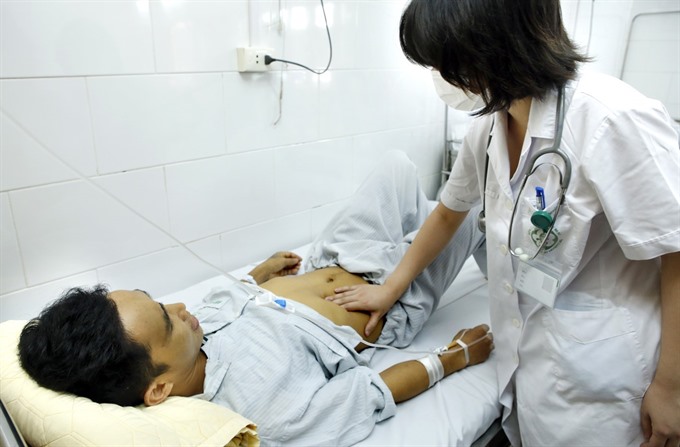 Society
Society

Việt Nam is among countries with the highest rate of hepatitis in the world; however, lack of knowledge about the disease leads people to hide it, causing a major barrier in hepatitis treatment and prevention.
 |
| A hepatitis patient receives treatment in the Communicable Diseases Department of Bạch Mai Hospital. — VNA/VNS Photo Dương Ngọc |
HÀ NỘI — Việt Nam is among countries with the highest rate of hepatitis in the world; however, lack of knowledge about the disease leads people to hide it, causing a major barrier in hepatitis treatment and prevention.
Nguyễn Hữu Cảnh, 54, left home in the northern province of Hà Nam to go to Hà Nội–based Central Hospital for Tropical Diseases for hepatitis B treatment for five months.
"In 2010, I was informed that I have hepatitis B after being checked at the province’s general hospital,” he said. “But at that time I really did not want anyone to know about my disease; they would get away from me. I looked for herbal treatments at home.”
“Early this year, I was very tired and losing weight. My family forced me to come back to the hospital. I was in the second stage of cirrhosis, and was hospitalised for long-term treatment.”
Nguyễn Văn Dũng, living in Tuyên Quang Province, was 40 years old but still did not dare marry because he was anxious about transmitting hepatitis B to his wife and children.
“Don’t dare fall in love with anyone because when I tell people about my disease, women feel scared and do not want to live with me,” he remembers telling himself.
The lack of understanding about the disease leads to a stigma against those dealing with hepatitis.
People diagnosed with hepatitis are often scared because of this stigma. They do not want to tell anyone about the disease and they fail to seek treatment. They usually look for information without any way to know whether it is legitimate. This affects not just their psychology but also their treatment process.
Workshops on hepatitis have been attended by thousands of patients and are supported by health professionals. Necessary information about the disease was explained to increase awareness of the disease.
Associate Professor Dr. Đỗ Duy Cường, Head of the Infectious Diseases Department at Hà Nội–based Bạch Mai Hospital, said liver-related diseases were among the main causes of death in the country.
The Ministry of Health’s Preventive Medicine Department reported that 20,000 people die of liver cancer each year in Việt Nam. Untreated hepatitis B and C viruses are the leading causes of cirrhosis and liver cancer.
The rate of hepatitis B in the country is the second highest in the Western Pacific region, with about 15 per cent of the population infected with hepatitis B. The prevalence of hepatitis C is about two per cent. This mean that of the estimated 93 million people in Việt Nam, about 15 million are infected with hepatitis B and about one million with hepatitis C.
There are vaccines to prevent hepatitis A and B, but there is no vaccine for hepatitis C.
According to Cường, although the number of people infected with hepatitis B and C was so high, up to 90 per cent of them did not know about the disease and discovered they were infected late, making treatment difficult.
“Patients with hepatitis at an early stage usually have no obvious symptoms, so the disease is only detected by screening and blood tests,” he said. “If someone in your family has hepatitis B, other members need to have a screening.”
“Anyone who has had hepatitis needs treatment management because hepatitis B has a long incubation period. If it is not detected, it is easy to spread to others.”
The Ministry of Health allows using new drugs in hepatitis C treatment that can bring the rate of recovery up to 95 per cent. At present, the average cost for a stage of treatment was VNĐ45 million over three months.
While hepatitis B treatment has been included in the national health insurance plan, hepatitis C is not covered by health insurance. — VNS




